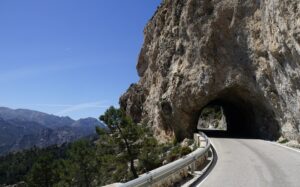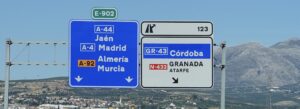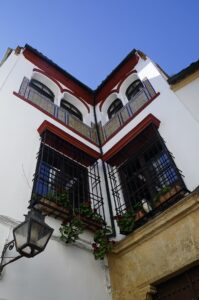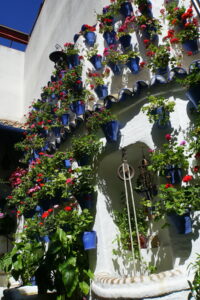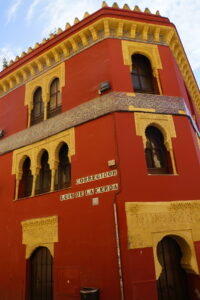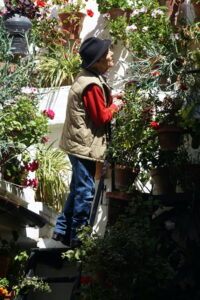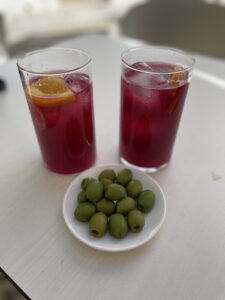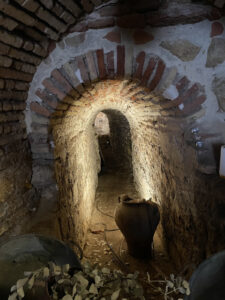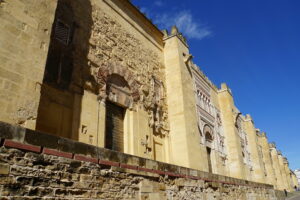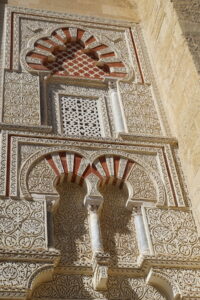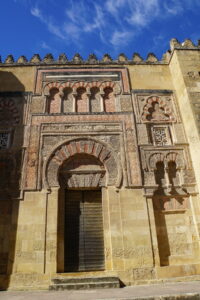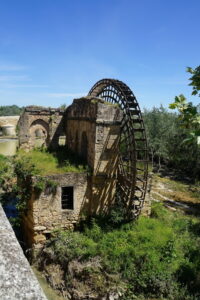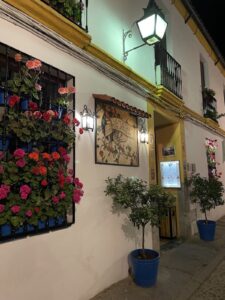After a most enjoyable five weeks, we finally depart la Herradura on Tuesday 9 April. After a stop in Salobrena for food, diesel, lpg & AdBlu we set off on our favourite route up Cabra de Montes, heading for Cordoba on the A-4050 stopping for lunch in a layby and passing west of Granada on the N-432. There’s olive groves as far as you can see with plenty of processing plants then gradually, the olives give way to wheat or barley, large arable meadows and an abundance of poppies, splashing the roadsides with red. After 264 km driving in lovely sunshine we reach the excellent Cordoba city camper van parking area at 1920.
After a bit of research for places to eat, we find the Restaurante Almudaina, just 10 minutes walk from the van inside the old city. It’s quite a smart place and we go for the ‘tapas’ menu at €35 per person to include several main dishes, dessert, wine and coffee all with impeccable service in a rather fine old building.
We decide to just wander the city on Wednesday. We visited several of the Patios which were open (for a small fee) to wonder at the floral arrangements of hanging pots all in full bloom. Late morning, when asking for a long, cold drink in a bar, we were offered ‘tinto de verano’. Quite refreshing, it’s like a red wine shandy – not sure I’d have it again though. We walked out to the Centro de Creación Contemporánea de Andalucía, a remarkable modern building designed by architects Nieto and Sobejano. There was only one exhibition, but worth the visit. A less inspiring ‘find’ was the Plaza de los Capuchinos built in the 17th century and listed as ‘worth a visit’ in several guides – we found it rather uninspiring after a very long trudge in the afternoon heat.
A surprise find when looking for somewhere to eat late afternoon was the Banōs Arabes de Santa Maria. The proprietress had stopped serving food, but offered us tapas and made us most welcome, although she was eating her own lunch before tidying up after all the diners had left! She let us go down the tunnel in the back room to see the ten metre deep cistern. The baths possibly date back to the 11th century. By late afternoon, the crowds had dispersed and it was a lot cooler so we continued wandering around the old city before finishing off at the Taberna la Viuda, near the Seville gate and exit to the parking area, for another good traditional meal.

